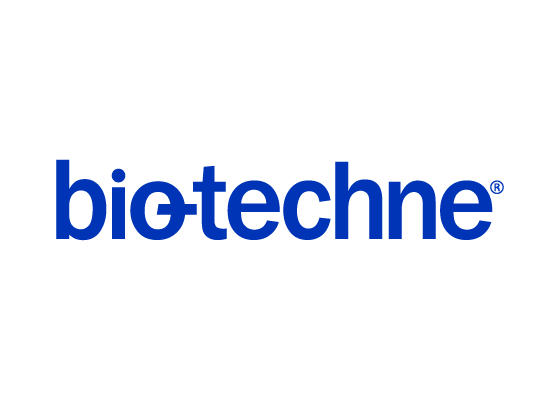Mouse Nectin-2/CD112 Alexa Fluor® 700-conjugated Antibody
R&D Systems, part of Bio-Techne | Catalog # FAB3869N


Key Product Details
Species Reactivity
Applications
Label
Antibody Source
Product Specifications
Immunogen
Gln32-Gly351 (predicted)
Accession # P32507
Specificity
Clonality
Host
Isotype
Applications for Mouse Nectin-2/CD112 Alexa Fluor® 700-conjugated Antibody
Flow Cytometry
Sample: C2C12 mouse myoblast cell line
Formulation, Preparation, and Storage
Purification
Formulation
Shipping
Stability & Storage
Background: Nectin-2/CD112
Nectins are a small family of Ca++-independent immunoglobulin (Ig)-like cell adhesion molecules (CAMs) that control cell adhesion, proliferation, and migration (1, 2, 3). The name Nectin derives from the Latin word necto, which means “to connect”. The Nectin family contains four members (Nectin-1 to -4), all of which show alternate splicing, a transmembrane (TM) region (except for Nectin-1 gamma which is secreted), and three extracellular Ig-domains. Nectins are highly homologous to the human receptor for poliovirus, and as such have been given the alternate name of poliovirus receptor-related proteins. They do not, however, appear to bind poliovirus (1). Mouse Nectin-2 is a 70 to 78 kDa type I TM glycoprotein that is found on a variety of cell types (4, 5). It has two splice forms (4, 6, 7). Nectin-2 alpha/PRR2 is a 65 kDa short form and is synthesized as a 467 amino acid precursor. It contains a 31 aa signal sequence, a 315 aa extracellular domain (ECD), a 28 aa TM segment, and a 93 aa cytoplasmic region. The ECD contains one N-terminal V-type Ig domain and two 85‑95 aa C2-type Ig-like domains (aa 153‑337) (8). The V-domain is believed to mediate Nectin binding to its ligands (9). A long, 78 kDa, 530 aa isoform of mouse Nectin-2 (Nectin-2 delta) also exists. It has the same signal sequence and extracellular domain as Nectin-2 alpha (aa 1‑338), but differs in the TM segment (21 aa in length) and cytoplasmic region (159 aa in length) (4, 6, 7). Mouse Nectin-2 ECD (aa 32 - 338) shares 72%, 77% and 95% aa identity with the ECD in human, canine and rat Nectin-2, respectively. Nectin-2 is known to bind pseudorabies virus, and herpes simplex virus-2 (HSV-2). It also binds select HSV-1 strains. It does not bind poliovirus (1, 10, 11). As a cell adhesion molecule, Nectin-2 will form cis‑homodimers (same cell) and trans-homodimers (across cells). Nectin-2 will not cis‑dimerize with other Nectins, but will trans-heterodimerize with Nectin-3 and CD266/DNAM-1 (1, 3, 11, 12, 13). Nectin-2 is found concentrated at cell-to-cell interfaces, and is presumed to contribute to tight and adherens junction formation (14). Through its interaction with NK and T cell expressed DNAM-1, it also promotes lymphocyte cytotoxicity and cytokine secretion against both tumors and dendritic cells (DC) expressing Nectin-2 (15, 16). In the case of DC, this may be a mechanism whereby the immune system eliminates DC that are inefficient at antigen presentation. Nectin-2 is expressed on epithelium, endothelial cells, Sertoli cells, monocytes, dendritic cells, granulosa cells, mast cells, eosinophils and fibroblasts.
References
- Takai, Y. and H. Nakanishi (2003) J. Cell Sci. 116:17.
- Rikitake, Y. and Y. Takai (2008) Cell. Mol. Life Sci. 65:253.
- Sasisaka, T. et al. (2007) Curr. Opin. Cell Biol. 19:1.
- Aoki, J. et al. (1994) J. Biol. Chem. 269:8431.
- Takahashi, K. et al. (1999) J. Cell Biol. 145:539.
- Aoki, J. et al. (1997) Exp. Cell Res. 235:374.
- Lopez, M. et al. (1998) Blood 92:4602.
- Morrison, M.E. and V.R. Racaniello (1992) J. Virol. 66:2807.
- Struyf, F. et al. (2002) J. Virol. 76:12940.
- Delboy, M.G. et al. (2006) Virology J. 3:105.
- Irie, K. et al. (2004) Semin. Cell Dev. Biol. 15:643.
- Tahara-Hanaoka, S. et al. (2004) Int. Immunol. 16:533.
- Satoh-Horikawa, K. et al. (2000) J. Biol. Chem. 275:10291.
- Nakanishi, H. and Y. Takai (2004) Biol. Chem. 385:885.
- Tahara-Hanaoka, S. et al. (2006) Blood 107:1491.
- Pende, D. et al. (2006) Blood 107:2030.
Long Name
Alternate Names
Gene Symbol
UniProt
Additional Nectin-2/CD112 Products
Product Documents for Mouse Nectin-2/CD112 Alexa Fluor® 700-conjugated Antibody
Product Specific Notices for Mouse Nectin-2/CD112 Alexa Fluor® 700-conjugated Antibody
This product is provided under an agreement between Life Technologies Corporation and R&D Systems, Inc, and the manufacture, use, sale or import of this product is subject to one or more US patents and corresponding non-US equivalents, owned by Life Technologies Corporation and its affiliates. The purchase of this product conveys to the buyer the non-transferable right to use the purchased amount of the product and components of the product only in research conducted by the buyer (whether the buyer is an academic or for-profit entity). The sale of this product is expressly conditioned on the buyer not using the product or its components (1) in manufacturing; (2) to provide a service, information, or data to an unaffiliated third party for payment; (3) for therapeutic, diagnostic or prophylactic purposes; (4) to resell, sell, or otherwise transfer this product or its components to any third party, or for any other commercial purpose. Life Technologies Corporation will not assert a claim against the buyer of the infringement of the above patents based on the manufacture, use or sale of a commercial product developed in research by the buyer in which this product or its components was employed, provided that neither this product nor any of its components was used in the manufacture of such product. For information on purchasing a license to this product for purposes other than research, contact Life Technologies Corporation, Cell Analysis Business Unit, Business Development, 29851 Willow Creek Road, Eugene, OR 97402, Tel: (541) 465-8300. Fax: (541) 335-0354.
For research use only